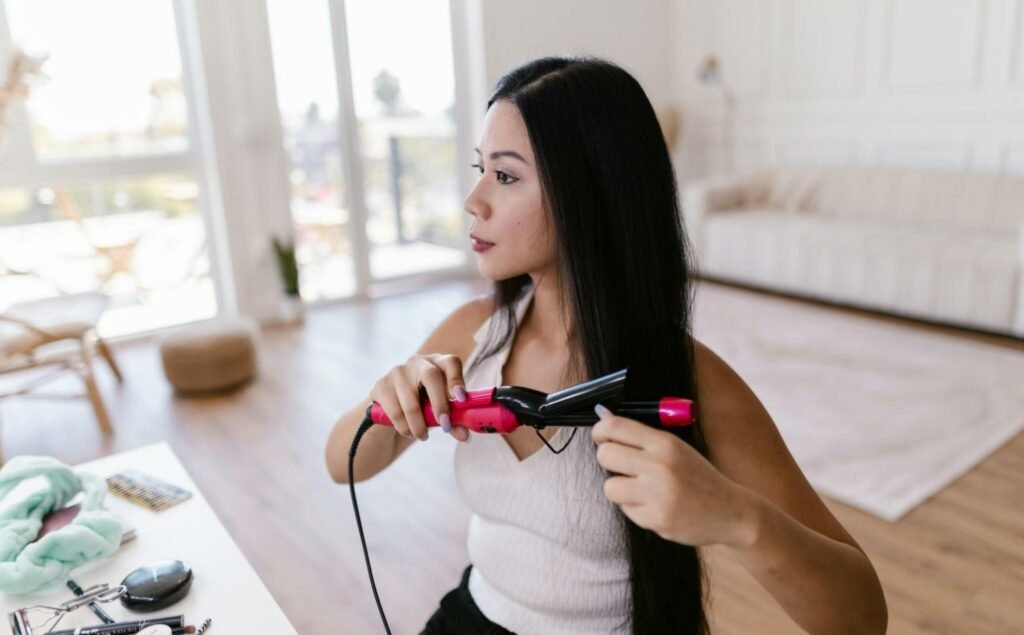In recent years, the beauty industry has seen a surge in the use of hair straightening products, offering effortless sleekness and smoothness. Yet, amidst the appeal of impeccably styled hair, worries about potential health risks, notably cancer, have surfaced. As individuals scrutinize their beauty routines, a pressing question emerges: are hair straighteners genuinely safe?
The pursuit of beauty intertwines with health concerns, prompting a reevaluation of these widely embraced cosmetic practices. In this article, we delve into the scientific evidence on hair straighteners and their potential link to cancer.
Understanding Hair Straighteners
Hair straighteners come in a variety of technologies, each with its advantages and disadvantages. In 2024, Statista revealed that approximately 40% of women globally acknowledged using hair straighteners as part of their beauty routine.
Within this statistic, the proportion of Black women among hair straightener product users is notably higher.
Here’s a quick breakdown of common hair straightener types. Ceramic straighteners distribute heat evenly and are gentle on hair. Ionic options reduce frizz and enhance shine, though suitability varies with hair types. Tourmaline, akin to ceramic, emits negative ions for added moisture retention. Steam straighteners offer a gentler process but may require more time compared to other methods.
Most hair straighteners contain silicone, which coats the hair shaft, sealing in moisture and imparting a sleek, glossy appearance. Also, many products contain polymers and conditioning agents to further enhance the straightening process and protect against heat damage.

Allegations of Cancer Risk
Alarming claims have surfaced about a potential cancer risk linked to the use of hair straighteners, despite the beauty industry’s reassurances on safety. Scientific scrutiny has escalated, propelled by accumulating evidence hinting at a possible connection between hair straighteners and diverse forms of cancer. The allure of sleek, straight hair is now intertwined with growing concerns about the health implications of these widely used beauty products.
Studies have pointed to the presence of harmful chemicals, such as formaldehyde and phthalates, in many hair straightening formulations. These compounds, known carcinogens, have raised red flags among health experts and regulatory authorities alike. Also, prolonged exposure to high temperatures during the straightening process has been implicated in damaging the hair follicles, potentially increasing cancer susceptibility.
Drugwatch reported that the National Institute of Health associated chemical hair straighteners with a 30% higher risk of breast cancer. Regular users faced increased breast cancer risks, as revealed in this study by scientists. Women using these products every five to eight weeks demonstrated a significant risk elevation.
This research underscores the potential health ramifications associated with the frequent use of such hair products.
Scientific Research
Understanding the science behind the allegations is crucial. Researchers are actively investigating the potential link between hair straightener use and various health concerns, primarily focusing on cancer risk. Studies have examined the ingredients in straighteners and their potential effects on the body.
The Oxford Academic research suggests chemical straightener use may correlate with higher uterine cancer risk, highlighting potential health concerns. However, it’s important to remember that correlation doesn’t necessarily equal causation.
Further complicating the picture is the variety of chemicals used in hair straighteners. Some formulations may contain ingredients with more concerning safety profiles compared to others. This variability makes it difficult to draw definitive conclusions about the entire category of hair straighteners.
The emerging scientific evidence has sparked a wave of lawsuits. The chemical hair straightener lawsuit alleges that manufacturers failed to adequately warn consumers about potential health risks associated with their products. While the legal process unfolds, ongoing research will hopefully shed more light on the true relationship between hair straighteners and health.
TorHoerman Law outlines the demands of plaintiffs in these lawsuits, which encompass various forms of damages. These may entail covering medical expenses, compensating for lost wages or diminished earning capacity, and addressing the decline in quality of life. Also, plaintiffs pursue compensation for various losses, including consortium, pain, emotional distress, disability, and other damages resulting from alleged harm.
Regulatory Perspective
Government agencies regulate hair straightener safety, overseeing consumer products and cosmetics. Regulatory bodies globally encounter increasing pressure to address health risks linked to chemical hair straightening products. They face mounting concerns from the public and stakeholders regarding potential hazards.
Regulatory agencies respond to scientific data and consumer worries by implementing measures to evaluate and regulate the safety of hair straightening products. These actions involve a thorough examination of ingredient lists, conducting risk assessments, and issuing guidelines to manufacturers. The goal is to ensure compliance with safety standards and enhance consumer protection in the beauty industry.
However, the regulatory landscape remains complex, with differing standards and enforcement mechanisms across jurisdictions. Despite efforts to enhance transparency and protect public health, gaps in regulation and enforcement persist, leaving consumers vulnerable to potential harm.
Expert Insights
With hair straightening products linked to health issues like cancer and ongoing research, it’s natural to feel overwhelmed by conflicting information. Expert insights are pivotal in navigating the discussion on hair straightener safety, aiding in understanding scientific research and regulatory policies. Health professionals, including dermatologists and toxicologists, provide crucial perspectives on the potential health risks linked to chemical hair straightening products.
Their input helps individuals make informed decisions about the use of such products.
Experts highlight the risk of hair shaft compromise and follicular damage due to extended exposure to high temperatures and chemical ingredients in hair straighteners. They stress the significance of thorough patch tests and consultation with healthcare professionals before introducing new products into one’s beauty routine.
The American Cancer Society recommends prioritizing overall healthy habits such as maintaining a healthy weight and regular exercise. These lifestyle choices have a greater impact on reducing cancer risk.
Mitigation Strategies
Amidst rising concerns over cancer risks linked to hair straighteners, adopting mitigation strategies is crucial for users. Although complete avoidance may not be possible, individuals can take proactive measures to minimize potential harm. These include choosing safer products and limiting exposure through reduced frequency and duration of use.
To mitigate potential harm from hair straighteners, opt for safer alternatives labeled formaldehyde-free and with fewer harsh chemicals. Reduce the frequency and duration of straightening sessions, exploring gentler styling methods. Apply heat protectants before straightening to shield hair from damage.
Also, regularly visit healthcare providers to monitor scalp health, watching for signs of irritation or inflammation indicating underlying damage. These proactive measures promote safer usage and preserve hair and scalp integrity.
Navigating the Tresses of Caution
The safety debate surrounding hair straighteners prompts crucial discussions about health risks in beauty practices. Delving into evidence and expert insights reveals the potential consequences of seeking perfectly straight hair. It’s imperative to balance beauty aspirations with awareness of potential health implications.
In navigating the path of caution, prioritizing health over aesthetic desires is paramount. Through staying informed, advocating for transparency in the beauty industry, and adopting mitigation strategies, individuals can balance style and safety.





















